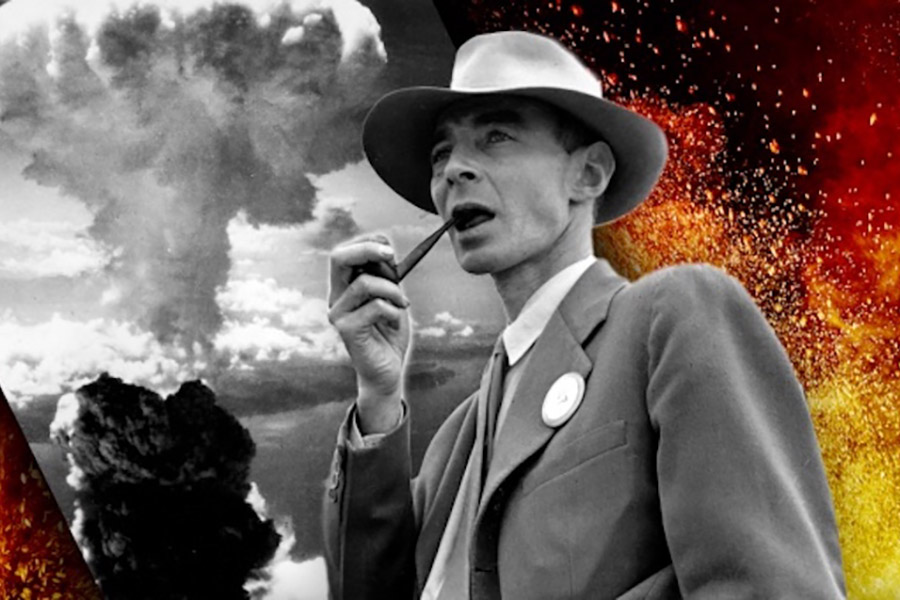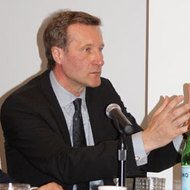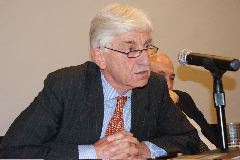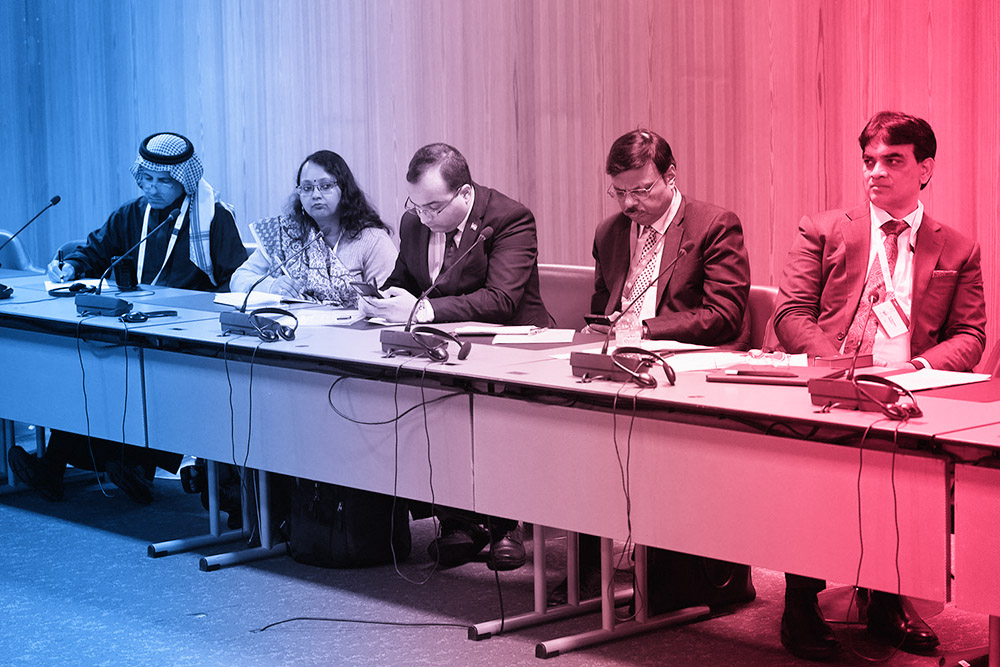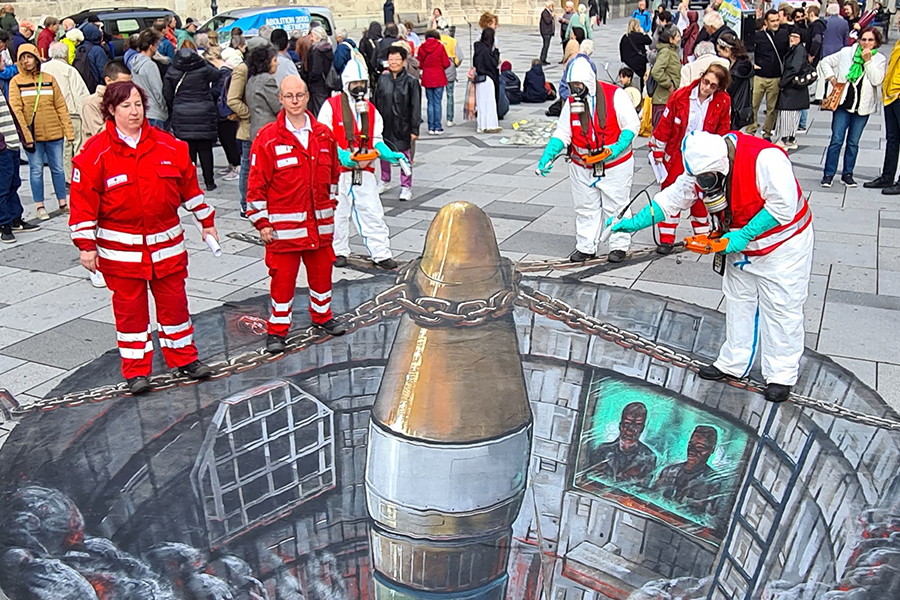Briefing and Strategy SessionApril 3, 2009New York, NY Event report by Rhianna Tyson, GSI Senior Officer * Click here for transcripts, photos, fact sheets and more On April 3, 2009, the Permanent Mission of Austria and the Global Security Institute held a special briefing on a lynchpin issue on the international arms control agenda. Over 40 ambassadors, experts and journalists gathered at the Austrian Mission to discuss “Contributions of the United Nations System in Advancing the Entry-Into-Force of the Comprehensive Test-Ban Treaty” (CTBT).
Austrian Ambassador Alexander Marschik, chairing the session, viewed the discussion as fulfilling the call of the CTBT Ministerial Meeting held at the UN last year, at which around 40 foreign ministers participated, as well as prominent Americans such as former US Secretary of Defense William Perry and UN Messenger of Peace Michael Douglas.(1) At that meeting, it was agreed that the push for the CTBT’s entry-into-force requires the participation of governmental officials, civil society representatives and international civil servants together. United Nations High Representative for Disarmament Affairs Sergio Duarte briefly touched on the long history of efforts to achieve a prohibition against nuclear testing, including the myriad of ways in which the CTBT is integral to the efficacy of other disarmament and non-proliferation machinery, including the nuclear Non-Proliferation Treaty (NPT), the five treaties establishing nuclear weapon-free zones and the dozens of General Assembly resolutions that support a robust testing prohibition.
Amb. Duarte discussed two trends developing around the CTBT. The first, an optimistic possibility is founded on relatively prompt ratification of the treaty by the United States. Such ratification—a reversal of the 1999 Senate vote—“would help enormously,” Duarte maintained, and would help create “a cascade” of those who would probably follow suit, particularly by “Annex 2 states”(2) whose ratifications are necessary for the treaty to enter into force. More than merely halt nuclear weapons testing, the entry-into-force of the CTBT would significantly bolster the entire non-proliferation regime, including the NPT, the Review Conference of which will take place in 2010. The other trend, according to Amb. Duarte, is much less optimistic. Further procrastination by Annex 2 states heightens the risk that treaty supporters will be tempted to strike a bargain in exchange for ratification, such as the oft-cited potential deal of “swapping” ratification in the US for new so-called warhead “modernization” programs. Such bargains, Amb. Duarte insisted, are contrary to the intent of the treaty. He reminded participants of the treaty’s preamble, which “Recogniz(es) that the cessation of all nuclear weapon test explosions and all other nuclear explosions, by constraining the development and qualitative improvement of nuclear weapons and ending the development of advanced new types of nuclear weapons, constitutes an effective measure of nuclear disarmament and non-proliferation in all its aspects.”(3) Executive-Secretary of the CTBT Organization Tibor Tóth urged treaty advocates to reframe the merits of the treaty in terms of the individual security benefits that each hold-out state stands to gain from its ratification. He underscored the fact that each state’s decision to ratify is an internal one: “only Indians can convince India to ratify,” he said, just like “only Pakistan can convince Pakistan” that the CTBT is in their respective best interests. The international community, however, does not have to “just sit on the fence and wait” for capitals to finish their assessments.
Advocates must make it clear that the advancement of various security measures—the CTBT, a Fissile Material Cut-off Treaty, a strengthened NPT—is “demand driven,” said Amb. Tóth. No state advances these measures out of a sense of duty or to “feel good,” but because the internal security debates in each state conclude that such measures increase their state security. The breakdown of the global financial and economic systems, matched with the rise in social tensions, inter-state tensions and the persistent threat of terrorism, makes for a potential “perfect storm” of insecurity, said Amb. Tóth. Each state must recognize on its own that nuclear weapons, or even the potential to bring nuclear weapons into such a volatile scenario, is not in anybody’s interest. For those who may feel frustrated at the slow progress of achieving entry-into-force, Amb. Tóth reminded us of worse challenges that the international community has faced before. In 1994, for instance, diplomats in Geneva had less than 3 years to negotiate and conclude the treaty, in spite of the ongoing nuclear tests undertaken by some states. What a long way we’ve come, he pointed out, from 1999, when the US Senate rejected ratification, India and Pakistan had recently tested their nuclear weapons, only 20 states had ratified the treaty and the International Monitoring Station was in need of $1 billion that it had not yet been promised. Compared to such recent adversity, Amb. Tóth reasoned, our task now is quite doable.
As the chairman of the negotiations throughout the 1990s, and as the current Special Representative to Promote Ratification of the CTBT, Ambassador Jaap Ramaker, too, recalled some troubling times for the treaty. In addition to the South Asian tests and the US Senate’s rejection, Amb. Ramaker recalled the strategic power politics at play during the negotiations, the way in which India, China, Pakistan and Russia linked their participation in the treaty to that of their neighbor. Ambassador Ramaker noted that the office of the Secretary-General of the United Nations has been a “very positive force” for the CTBT. There is a history of support from the office of Secretary General, which has included Boutros Boutros-Ghali, Kofi Annan and is now continued by Ban Ki-moon, each of whom advanced the treaty “in their own way.” Amb. Ramaker also noted the importance of Article XIV conferences which are focused on advancing entry-into-force and take place just before the general debates in the General Assembly. These events always increase ratifications, Amb. Ramaker noted, and he placed special hope on the next meeting.
Jonathan Granoff, President of the Global Security Institute, argued that the CTBT “will not be won on arms control merits alone.” The political context of every issue is critical. For example, the US-India nuclear sharing deal passed on trade and development concerns despite the staunch objections of the arms control community. Those who opposed the deal were challenged as being against progress. Mr. Granoff argued that we must frame the CTBT as part of the dynamic of global progress in cooperation in fields as varied as environmental concerns and economic development. The monitoring system represents a tangible expression of such cooperation with direct benefits relating to climate, earthquake and tsunami concerns. In the way the International Space Station has precipitated unprecedented cooperation in space among scientists from dozens of nations, with enormous symbolic value, the CTBT can similarly generate political and cultural benefits beyond its clear security value, Mr. Granoff said. “Any country not part of that process can be made to look out of step with history. That is a strong advocacy tool.” Echoing the view of Amb. Tóth, Mr. Granoff agreed that a state’s domestic concerns, as understood internally, will outweigh any external argument. However, he argued, all diplomats must work to ratchet the issue up the political ladder in their respective countries, and work to get their Foreign Minister or Head of State to delivery key security speeches on the subject and to broach the subject in bilateral meetings with their counterparts in hold-out states. If the US delegation, he suggested, should voice their support for the treaty at the upcoming NPT PrepCom meeting, the entire room, diplomats and NGOs alike, should burst into applause, sending a signal of the importance that the community attaches to this treaty.
In the vigorous discussion that followed, participants offered their own suggestions on how to support ratification by the important remaining hold-out states. One participant suggested that countries should not only continue to raise the issue in bilateral meetings with the hold-outs, but that they should do so at the highest level possible. Another suggestion was to encourage hold outs to make “conditional commitments,” that is, an oral declaration of their intent to sign and ratify if the US, for instance, is making moves towards that end. Several participants strongly supported the arguments of the speakers, emphasizing the importance of a “clean ratification,” that is, no modernization programs promised in exchange for the CTBT. Towards this end, timing will be of crucial importance, as will strong and committed leadership, which participant Daryl Kimball, Executive Director of the DC-based Arms Control Association believes is present in the US, both at the presidential level and demonstrated also by Senator John Kerry, chair of the key Foreign Relations Committee.
Many participants referred positively to the Secretary-General’s speech delivered on October 24, 2008 calling for the abolition of nuclear weapons through a five point proposal.(4) It was agreed that this was the most comprehensive and in-depth agenda ever presented by a Secretary-General, going beyond the NPT and looking at ways that disarmament can be advanced through the Security Council, a World Summit or a multilateral convention. It was agreed that ambassadors should send letters of support to the Secretary-General supporting his leadership in this area. There was also widespread recognition of the important roles for both the diplomatic community and civil society to play in the CTBT’s entry-into-force. Permanent Representatives in New York have the opportunity to approach ambassadors and representatives of the countries that have not yet signed and convince them of the benefits of ratification. The most important role for the international community is to clarify the mission of CTBT. We must consistently demonstrate that nuclear weapons are increasingly more of a threat than any threat they seek to address, and that deterrence is no longer a workable policy in the 21st century. As we move towards a world without nuclear weapons, the doctrine of extended deterrence must be changed to “limited deterrence,” demonstrating that the singular possible value of nuclear weapons is to keep them from ever being used. As we walk down the nuclear ladder and towards a safer, nuclear-free world, this use, too, will become obsolete. » Read the full transcript of Ambassador Duarte’s remarks » Read the GSI brief delivered by Jonathan Granoff » Download the fact sheets distributed by the CTBTO » Download the brief distributed by the Arms Control Association » View a photo gallery of the event » Click here for a full list of participants
*Special thanks go to GSI interns Olga Lech and Jason J. Theobald for their assistance with the event and this project report. Footnotes (1) See: https://www.ctbto.org/index.php?id=1527 (2) 44 states are listed in Annex II of the CTBT, each of which must ratify the treaty for it to enter-into-force. Of these 44, eight have yet to ratify: North Korea, Egypt, India, Indonesia, Iran, Israel, Pakistan, and the United States. (3) Preambular paragraph 5 of the Comprehensive Test Ban Treaty. The full text of the treaty is available at: https://www.ctbto.org/fileadmin/content/treaty/treatytext.tt.html (4) For the full text of Secretary-General Ban’s landmark speech, “The United Nations and Security in a Nuclear Weapon-Free World,” which includes the five point proposal, see: https://www.un.org/News/Press/docs/2008/sgsm11881.doc.htm |
